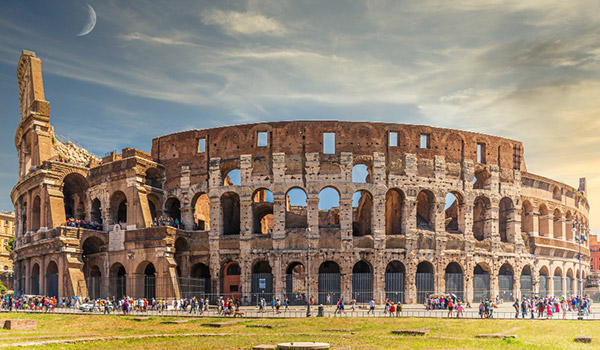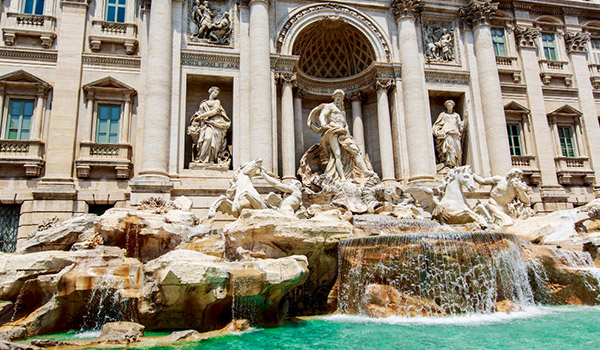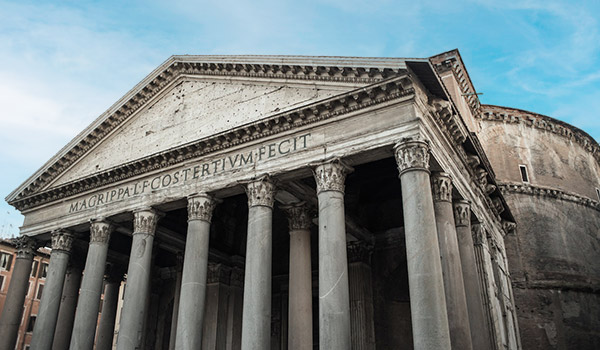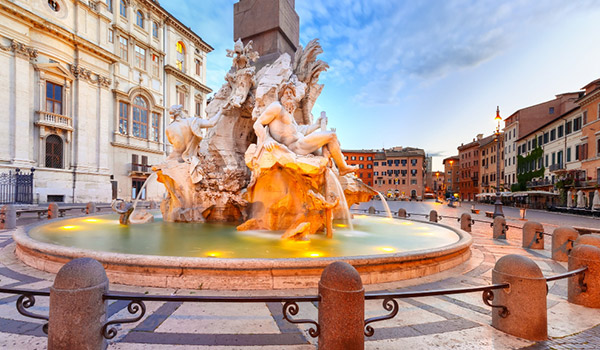About Rome
Rome is the capital of Italy, a large cosmopolitan city with an artistic, architectural and cultural history that has been influencing the whole world for almost 3000 years. It is dominated by ancient structures with an infinity of places to visit, covering over two millennia of history. It is known all over the world as the Eternal City, a synonym for everlasting beauty, history and spirituality.
Located in the Centre of the Country and in the centre of the Mediterranean see, it is an easy reach from travellers from all over the world. Rome is one of the preferred sites for millions of tourists and it hosted successfully various international congresses.
In addition to hotels and conference facilities, there are up-to-date exhibitions, art galleries, theatres, and cultural events which add a charming and relaxing flavour to participants’ stay in the city.
Modern Rome is also a major international business destination. It is the seat of the Italian government and the economy is dominated by services, telecommunication companies, research, tourism, construction and banking.
How to reach the host city
Thanks to its excellent geographical position and its direct air, road, and rail links to the rest of Europe, Rome can be easily reached.
International Airports
Rome is served by two international airports, well connected to the city centre:
- LEONARDO DA VINCI AIRPORT (Fiumicino)
- G.B. PASTINE AIRPORT (Ciampino)
Both hubs are served by the major flight companies, including the low-cost ones.
The international hub Leonardo da Vinci Airport is located about 35 Km from the city centre and is connected to Rome city centre by the high speed Leonardo Express train.
From and to Fiumicino Airport
Leonardo Express
At the Airport’s Railway station the Shuttle-Train Leonardo Express is a 32 minute direct service to Termini Railway Station running every 30 minutes (every 15 minutes at peak times). Tickets may be purchased from the Trenitalia website, from the ticket office, from kiosk ticket machines, travel agents, authorized vendors and Trenitalia counters near platforms.
FL1 train
The FL1 service to Tiburtina Railway Station takes 48 minutes and leaves every 15 minutes on week days and every 30 minutes on weekends and on Holidays. The train also stops at the following Stations: Parco Leonardo, Fiera di Roma, Ponte Galeria, Muratella, Magliana, Villa Bonelli, Trastevere, Ostiense (where there is a connection with the Metro B Line) and Tuscolana.
By Bus
There are different bus lines serving to Termini Station and other stations: Cotral service (public service), Atral Bus, Gaspari Bus, Terravision, SIT Bus, TAM.
By Taxi
Taxis to Rome are found at the exits of both the domestic and international arrival terminals.
From and to Ciampino Airport
Ciampino Railway station is reached by special buses from the airport. Trains, which leave every 15 minutes, take 10 minutes to get to Rome Termini (Metro A & B).
By Bus
Bus lines to Termini Station: ATAC, Atral, Gaspari Bus, Terravision, SIT bus
By Taxi
Taxis to Rome stop in the small stant right in front of the airport itself.
For more information, please visit Tourist Office Website.
Railway Lines
Rome has an important railway link connected with the rest of Italy and with Europe by high-speed trains offering the greatest efficiency at a low cost.
The central railway station, TERMINI, is in the heart of the historical centre and very close to many hotels.
Other important railway stations are: Tiburtina, Ostiense, Valle Aurelia, etc.
Highlights

Colosseum & Roman Forum
Also called Flavian Amphitheatre, the Colosseum is the main symbol of Rome. It’s an imposing construction with almost 2,000 years of history, that will bring you back in time to discover the way of life in the Roman Empire. The Roman Forum was the hub of political and social activity of the Roman citizens. Located just besides the Colosseum, and along with it, is the greatest sign of the splendour of the Roman Empire that can be seen today.

Trevi Fountain
Trevi Fountain is the most beautiful and the largest fountain in Rome. At the centre is the statue of Oceanus, who stands atop a chariot pulled by sea horses and is accompanied by tritons. The fountain also features statues of Abundance and Health.

Pantheon
The Pantheon of Agrippa is the best-preserved building from ancient Rome, practically intact through the centuries, and the most copied all over the world. It is also the only roman building that is still in use with the same purpose it had originally been created for: as a temple. Nowadays it is a catholic church named “Basilica of Saint Maria ad Martyres”, where few important tombs can be found, such as the tomb of the great Renaissance artist Raphael. The dome is considered an architectural wonder and the biggest ever built, with a surprising oculus that is the building’s main source of natural light.

Piazza Navona
Piazza Navona (Navona Square) Is one of the most charming and popular squares in Rome, surrounded by terraces and restaurants, with three beautiful fountains: Fontana dei Quattro Fiumi, designed by Bernini (located at the centre of the square), Fontana del Moro and Fontana del Nettuno.

Piazza di Spagna
Piazza di Spagna (Spanish Square) is one of the most-visited squares in Rome and a magnificent example of Italian Baroque style. Located at the bottom of the of the Spanish Steps, and at the centre is the Fontana della Barcaccia (Fountain of the Ugly Boat) designed by Bernini. The Scalinata di Trinità dei Monti (The Spanish Steps) connect Piazza di Spagna and the Church of Trinità dei Monti.

Victor Emmanuel II Monument
Also known as “Altare della Patria” (Altar of the Fatherland), is an imposing building located in Piazza Venezia built as a tribute to Victor Emmanuel II, the first king of Italy after the country’s unification. It provides some breath-taking views of Rome.
Find out more about Rome tourist information by visiting the Tourist Office Website.

